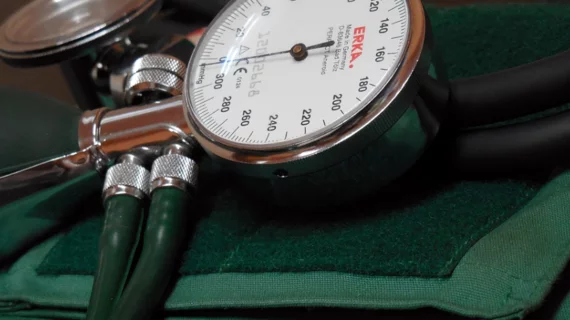What the new definition of ‘hypertension’ means for AFib patients
The American College of Cardiology (ACC) and American Heart Association (AHA)’s most recently updated guidelines for high blood pressure in adults redefined hypertension at a lower threshold, and those boundaries remain safe for patients with atrial fibrillation (AFib), according to a large-scale review published in the current issue of the Journal of the American College of Cardiology. Researchers also identified 120-129/<80 mm Hg as the ideal blood pressure for AFib patients looking to stay heart-healthy.
First author Daehoon Kim, MD, and colleagues said in the journal that despite hypertension’s high prevalence in patients with AFib, scientists have failed to identify an optimal blood pressure treatment threshold or treatment goal for patients with both conditions.
“Stroke prevention is the principal management priority in patients with atrial fibrillation,” first author Daehoon Kim, MD, of Severance Cardiovascular Hospital and Yonsei University College of Medicine in Seoul, South Korea, et al. wrote in the journal. “The presence of hypertension in patients with AFib is an independent risk factor for stroke, with such individuals at a 1.8- to 2-fold increased risk compared with those without hypertension.”
Kim’s team evaluated blood pressure in a pool of nearly 300,000 adults enrolled in the Korean National Health Insurance Service database. All participants had been diagnosed with oral anticoagulant-naive, nonvalvular AFib.
According to the Joint National Committee’s hypertension guidelines, which Kim and his co-authors said have been implemented worldwide for a decade, 62.2 percent of those patients had hypertension. Under the 2017 ACC/AHA guidelines, though, that number rose to nearly 80 percent, including 17.2 percent with newly defined hypertension.
The authors said those with high blood pressure were also at an increased risk for ischemic stroke, intracranial hemorrhage and heart failure admission compared with non-hypertensive patients. For those who were dealing with hypertension and undergoing treatment for the condition, Kim et al. suggested a systolic BP of 120-129 and a diastolic BP of less than 80 would avoid the most major adverse heart events.
“In the present study, patients with AFib and newly redefined hypertension based on the 2017 ACC/AHA guideline were at significantly higher risk of major cardiovascular events, suggesting that the stricter BP threshold of the new guideline is more appropriate for use in patients with AFib than that of the Joint National Committee guideline,” the researchers wrote.
Since there’s a paucity of evidence supporting treatment with both drugs and lifestyle modification in patients with newly defined hypertension but a low CVD risk, the ACC/AHA guidelines recommend nonpharamacological therapy alone in the majority of cases.
“In our sensitivity analysis restricted to patients with atrial fibrillation and low CVD risk, the newly redefined hypertension group reported similarly increased risk adverse outcomes, suggesting that even patients with low CVD risk might benefit from antihypertensive treatment in AFib,” Kim et al. said. “Further research is required to investigate whether AFib should be considered a high CVD risk condition such as diabetes or chronic kidney disease, and to determine the specific BP treatment threshold for patients with AFib.”

